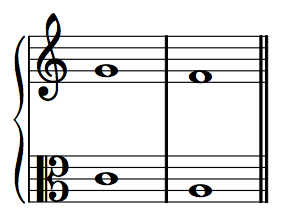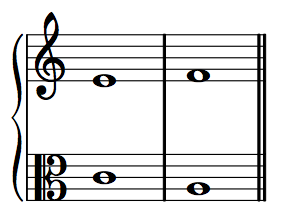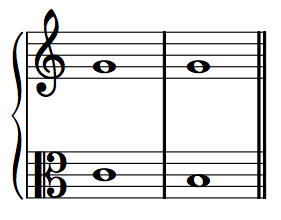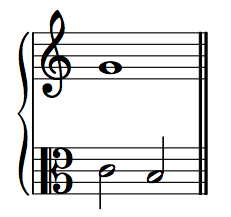Integrated Music Theory 2018-19
Discussion 5a - Introduction to Counterpoint
Class discussion
Class Discussion
Textbook needs a definition of the word counterpoint.
Why do we study counterpoint in a general music theory course?
-We have to understand why we hear music the way we do.
-It goes along with Aural Skills
-It informs our performance practice
-It’s like learning a new language, counterpoint is putting words together.
These lines are built with the others in mind, but still are intentional and functional as one line
Consonant intervals: Sounds stable on its own, for example major chord.
Imperfect- M3, m3, M6, m6
Perfect- P1, P5, P8
Dissonant intervals: Sounds like it needs to resolve, for example a diminished chord
P4, M2, m2, M7, m7, A4, d5
Why are fourths dissonant?
-They sound like they still need to resolve
What are the different kinds of contrapuntal motion?
Static: Lines that do not move
Contrary: Movement in opposite direction
Similar: Lines moving in the same direction, and arrive at different interval sizes
Oblique: One line moves while the other(s) remain the same
Parallel: Lines moving the in same direction and arrives at same interval size
What is counterpoint
-smooth voice leading
-different lines of music or melodies moving together
What is the value of counterpoint
-one of the big concepts of music, voice leading!
Further reading
From Open Music Theory
Types of contrapuntal motion
There are four types of contrapuntal motion between two musical lines. Differentiating these four types of motion is essential to generating good voice-leading, both strict and free.
In parallel motion, two voices move in the same direction by the same generic interval. For example, the following two voices both move up by a step. Note also that both dyads form the same generic interval (sixth). This will always be true when two voices move in parallel motion.

In similar motion, also called direct motion, two voices move in the same direction, but by different intervals. For example, the following two voices both move down, but the upper voice moves by step while the lower voice moves by leap. Note also that the two dyads are different generic intervals. This will always be the case with similar or direct motion.

In contrary motion, two voices move in opposite directions—one up, the other down.

In oblique motion, one voice is stationary, while the other voice moves (in either direction). The stationary tone may or may not be rearticulated.

or
